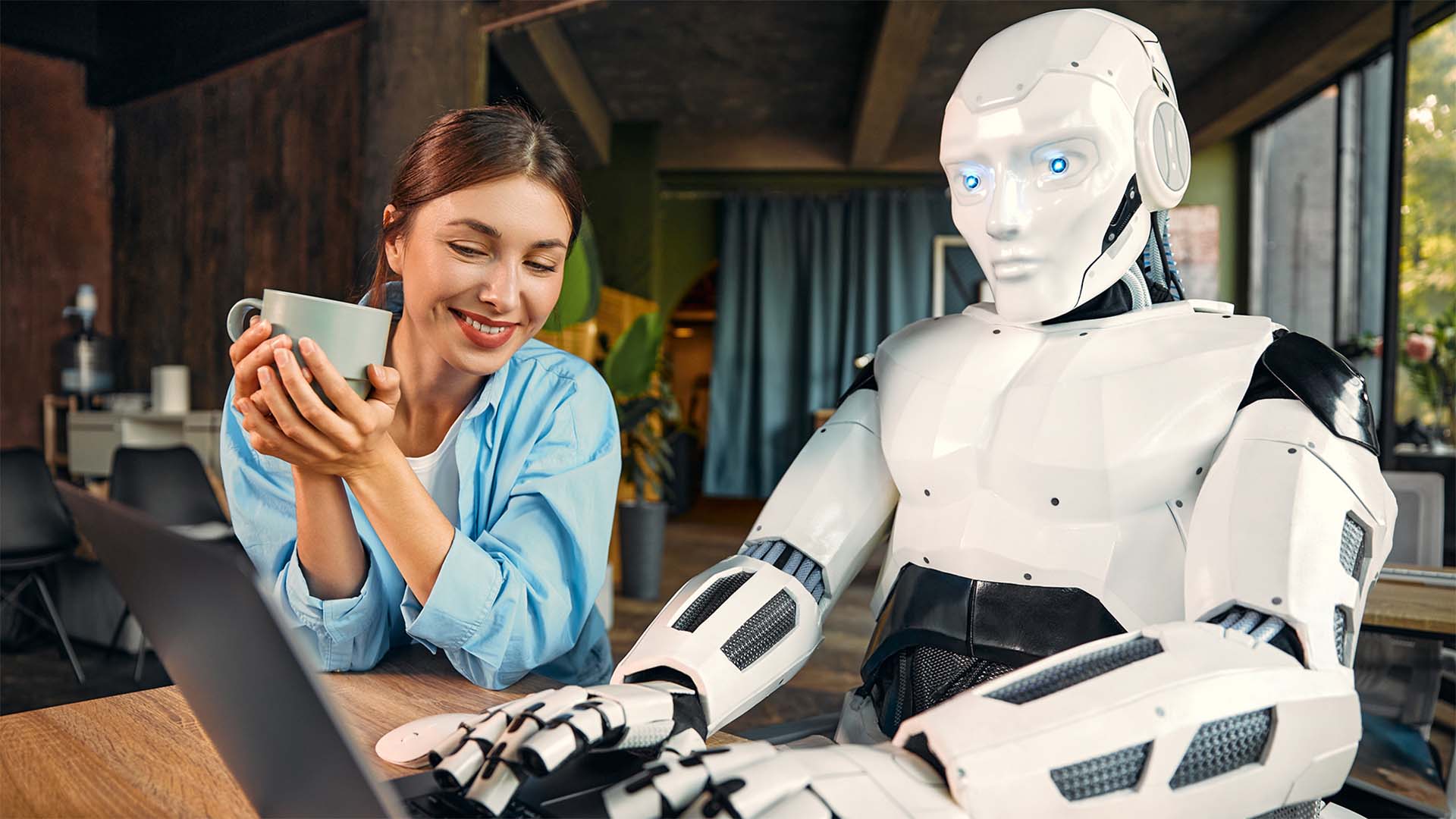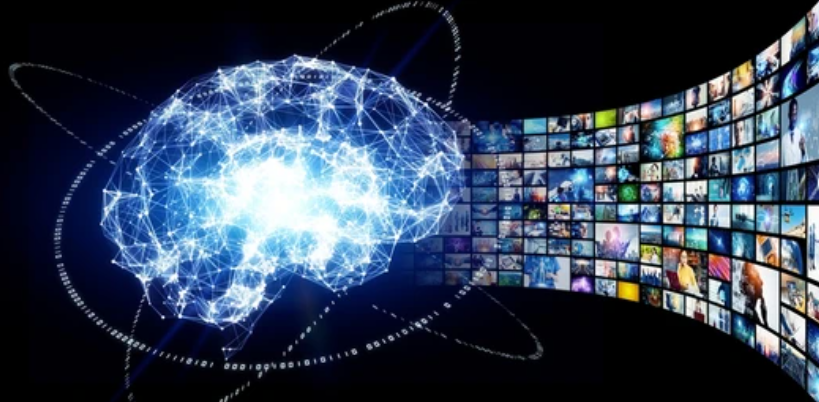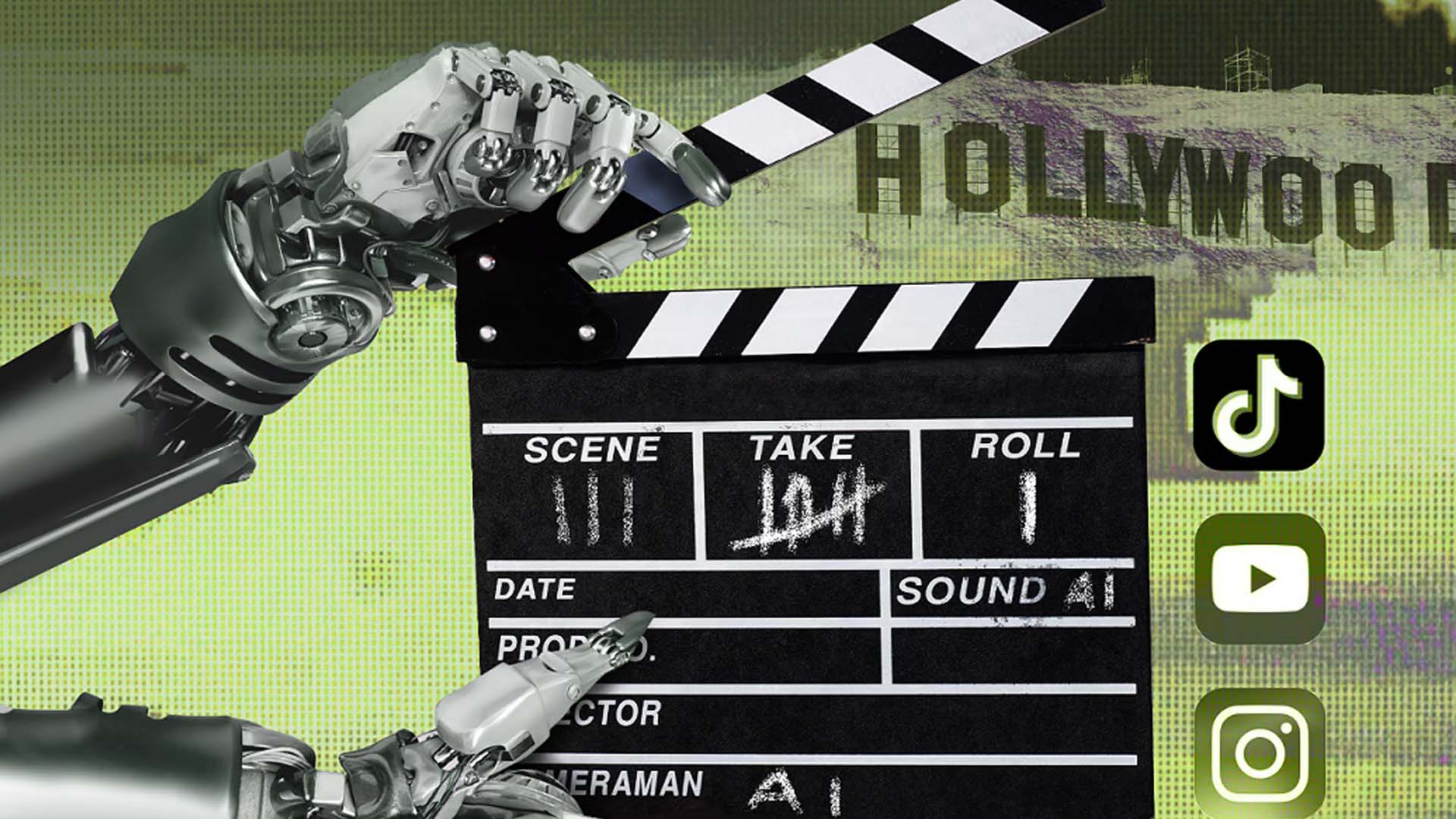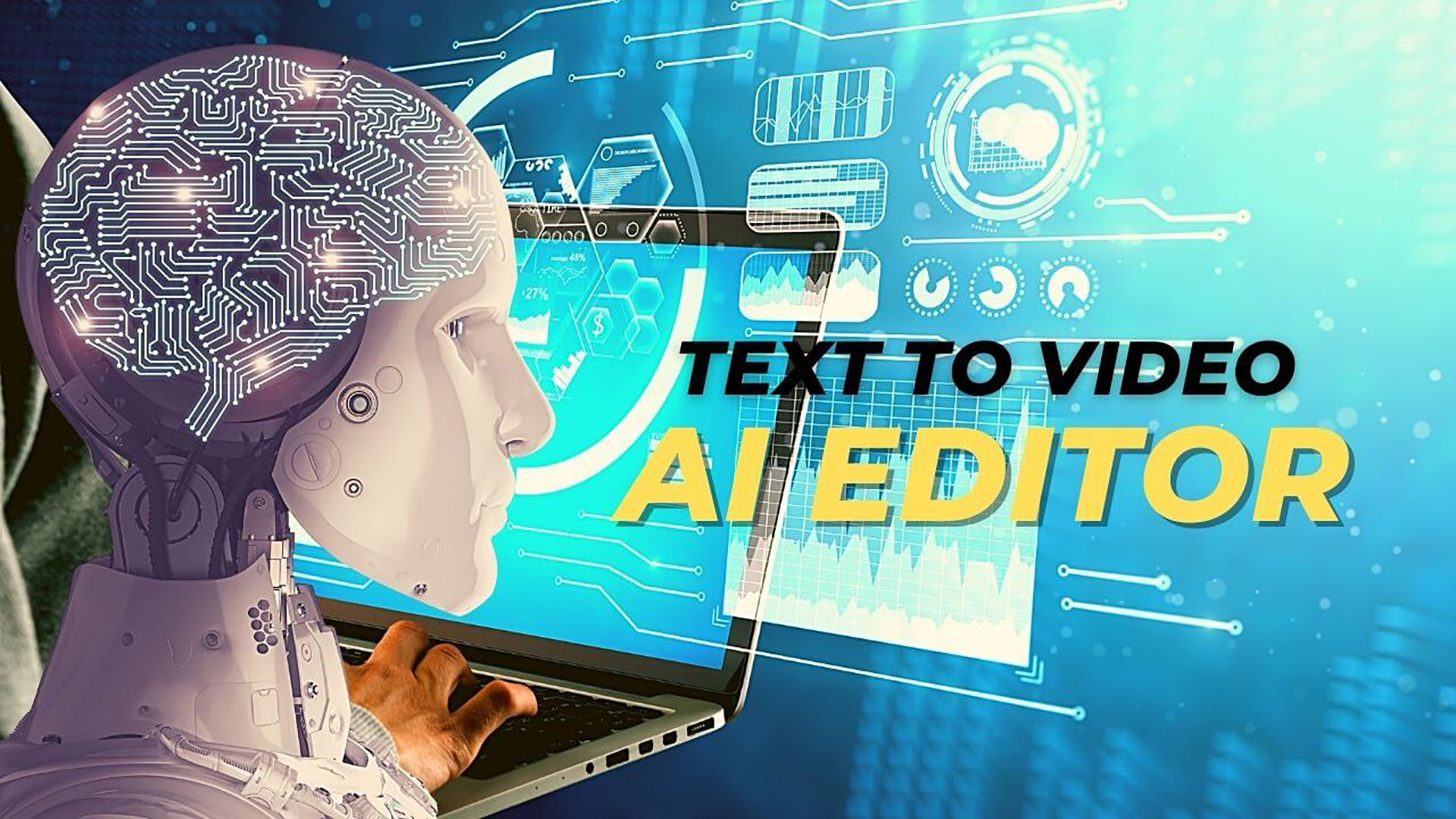AI in Video Production – the Good, the Bad and the Ugly
AI in Video Production – Can you now get good video produced on the cheap in-house for your video marketing needs?
10-minute read
Can you now get AI to make video for you without having to outsource or use up valuable time in the marketing or comms department? It’s an excellent question because producing on-target, effective videos costs companies and organizations a lot of time and money. So, has AI finally freed them from this, allowing the comms or marketing department to whip up the right stuff in no time and at minimal cost? Read on to find out.

In this article:
1. Can AI really produce video?
2. AI to Speed Up Video Production
3. Can I use my own footage with AI for video production?
4. What about computer-generated imagery?
And a whole lot more
Can AI really produce video?
Yes, unequivocally. AI can produce video from text, prompts, a voice over (have a look at the video page-right). No problem. Can it produce good video? That’s another matter. We took a look at some of the various AI-generated video options out there. These include the following, which are considered among the pioneers in this avant-garde trade:
- Sora: https://www.imagine.art/
- Lumen5: https://aurelius.link/lumen5
- Pictory: https://aurelius.link/pictory
- Wave Video: https://aurelius.link/wavevideo
- Lucas: https://aurelius.link/lucas
What we found is that, though all these platforms do a commendable job at creating the impression of quality, if you get too critical, you get let down. The main reason for this is that these tools, by definition, rely on what stock footage is available online to illustrate your script or voice over. For anyone who’s worked with stock footage you’ll know that picking out the right shots is tricky. The adjective trite comes to mind, or hackneyed, fake, over-the-top. That’s right, it’s really hard, even for a well-trained and experienced video editor to find stock footage that works.
Of course, much depends on the nature of your script. A very generic piece about climate change will undoubtedly fair better than a demo about a new product or a campaign full of unusual, situation-specific vocabulary. But on the whole, we found video production AI to be seriously wanting when it comes to tasteful, original and on-the-button footage selection.
AI to Speed Up Video Production
Ok, so AI-generated video is not perfect, but I can go in there and change things around, right? So even if it’s only 50% good, that’s already half as much work for me. That’s true, indeed. And what we found, too, is that what the AI proposes can often provide inspiration. It helps you leap-frog from the blank timeline to something you can go on. That said, be warned that depending on your subject matter, stock footage currently available online can be woefully inadequate.
At Fullframe Creative, we work a lot with international organizations dealing with themes often focused on developing countries. Unsurprisingly, there is a dearth of useful footage from this part of the world, which makes using AI to whip up a piece on humanitarian interventions in, say, Syria, quite a challenge.
Can I use my own footage with AI for video production?
Yes, and that’s where AI-driven video production becomes really interesting, especially for B2B and B2E content, but also for many other forms of video, such as event highlights videos. The way this works is simple: you upload footage to the platform you’ve signed up to, and you define your criteria for the video you want: duration, type of music, mood, keywords. You can even feed the platform a script and it will generate a voice over for you, based on this.

That said, as the old saying goes, you get out what you put in. And I don’t just mean by that that you need to make sure the footage you provide to the AI is good. I also mean that what the AI chooses to show in the final video is not necessarily what you would have chosen while sifting through broll to pick out the best cuts. What this implies, of course, is that, if you want the AI to deliver video gold, you need to feed it gold, not coal. And to do that, guess what? You need to do some video editing.
Once you’ve sifted through all your footage to pick out only the best stuff, to make sure the AI can’t go astray, you ask yourself the question (at least we did): is there now any point in getting the AI to do this edit for me? I’ve done three quarters of the work by now. Things that make you go hmm. But again, we found that letting the AI take it from there can provide inspiration, at worse, and a leap forward, at best.
What about computer-generated imagery?
Imagine you have no good footage of scenes you need illustrated in video, and that, as previously stated, you know what online video banks will provide nothing decent or relevant. Are you doomed to call us up for animation? No. You can get AI tools that will generate imagery for you, from scratch, so to say. Have a look at this video to better understand:
Impressive, right? But did you notice that, in the AI generated scenes, there is a je ne sais quoi of fakeness? It’s a bit like those combat scenes in the Matrix where, you almost can’t tell that’s not Keanu Reeves, but then again, you can. So there, the question you need to ask yourself is this: how will your target audience react to realizing that a scenes, or many scenes, in your video are, well, fake. Will they think, “Could have been animation.
So what if it’s artificial.” Or will they think, “Ooh, that’s kitschy. Why did they do that?” Hard to say, right? Perhaps it’s a question of viewers getting used to the idea that we can now create scenes for the visual enhancement of explanations, talks, whatever, and that this is not a claim to authenticity, but a bonafide art form, like animation, that’s just used to avoid having static images instead.
Our sense, and we’re not alone, is that, initially at least, it will be important not to seem like you’re trying to make fake seem real. But mixing real video with AI-produced CGI is going to be tricky to pull off without coming across as cheap or kitschy. Proceed with caution.
The Impact of AI-generated Video on the Big and the Small

For corporate brands, AI-powered video production offers numerous perks:
- Savings : AI reduces the need for big production teams, cutting down on labour costs. This is especially good for large corporations producing a high volume of content. But SMEs benefit too as AI-driven video production tools help them create high-quality videos without breaking the bank. Start-ups can produce more content in less time, allowing them to test different strategies and iterate quickly based on performance data. The user-friendly nature of many AI tools means they can be adopted with minimal training, eliminating the need for a dedicated in-house video production team.
- Consistency: AI ensures brand image stays consistent, and video messages stay true across all videos. This is key for maintaining brand identity and reputation.
- Speed: AI accelerates the video production process, allowing brands to respond quickly to market trends and customer demands.
- Customization: AI enables companies to tailor video content to their target audiences, enhancing engagement and conversions.
- Creativity: AI-powered tools can make unique and catchy concepts, enabling start-ups to make a big impact with few resources.
AI in video production – the technicalities
As we know, AI is a kind of super-intelligent assistant that can analyze data, learn from it and make decisions on its own like a human, while not being a human. In video production, the technology brings a touch of magic by automating tasks and enhancing creativity.
The two pillars of intelligent technology relevant to filming include:

- Machine Learning (ML): the grey matter of AI, it enables algorithms to recognize patterns and improve performance without explicit programming. In video production, it can be applied to automate editing, identify scenes and even suggest music that matches sequences.
- Neural networks are now extensively used for image and video analysis. These networks can identify objects, people, and even emotions in videos, enabling automated tagging, indexing, and content categorization during and after video production.
- Computer vision, a subset of AI, has found numerous applications in video production. Object recognition and tracking algorithms are used for various purposes in the video industry, from following actors on screen to tracking the movement of products in commercials. Serving as the eyes of AI, it enables computers to “see” and interpret visual information from images and visuals. As such, this technology can be used for tasks such as facial recognition, object tracking and even the detection of specific scenes. AI editing takes advantage of computer vision to make the workflow more efficient and tailored to the specific needs of the content.
AI’s journey into the world of cinema notably began with basic tools that were like clumsy toddlers, still learning the ropes. Over time, however, they evolved into sophisticated systems capable of handling complex tasks, such as automatically generating highlight reels or applying impressive visual effects.
Today, intelligent technology has firmly established its presence, with creators and studios enthusiastically integrating it into their workflows. AI isn’t just a passing trend. It’s here to stay, and its integration into the video production landscape will become even more profound in the years to come.
The use of AI in video production and editing
In the fascinating world of cinema, AI is stealing the show with top-notch performance in key areas of the shooting and editing process. Let’s scroll through the credits and take a closer look at how it’s being used at different stages of video production.
1. Scriptwriting
By analyzing large amounts of data, AI-based scriptwriting tools can suggest engaging plots, character development ideas and even witty dialogue, providing valuable inspiration and enhancing the creative process.
Indeed,The future of AI in video production is likely to be heavily influenced by AI-driven storytelling. Predictive analytics will play a significant role in understanding audience engagement with video content. By analyzing viewer behavior, AI algorithms can predict which story elements are likely to captivate the video audience, leading to more compelling and personalized video content.
Screenwriters can also use the technology to refine their scripts by identifying inconsistencies, plot holes and potential improvements. What’s more, AI can adapt its writing style to suit specific genres or mimic the writing of particular authors, making it versatile and adaptable.
Real-time adaptation to viewer preferences is another exciting prospect for AI in video. Imagine a TV show or movie that adjusts its plot or character development based on individual viewer reactions. AI could make this a reality, creating a more interactive and engaging viewing experience.
2. Subtitling
Intelligent technology has greatly improved the process of transcribing spoken documents and adding subtitles to visuals. Automatic Speech Recognition (ASR) technology can accurately convert audio to text, providing highly accurate transcriptions in real time.
This not only benefits video production, but also facilitates accessibility by making content available to the hearing impaired. What’s more, intelligent tools can automatically generate multilingual subtitles, extending the reach of visuals to an international audience.

3. Dubbing video with AI
Traditionally, creating voice-overs for videos requires hiring voice actors and recording long sessions in a studio. AI-driven text-to-speech (TTS) technology has dramatically changed this landscape. With high-quality TTS systems, creators can convert written scripts into natural voice-overs in different languages and accents. This not only saves time and money, but also makes it easier to localize content for a global audience.
Meanwhile, intelligent voice and speech recognition technology ensures that the accuracy and speed of these systems have improved considerably, ensuring seamless synchronization between audio and video elements.
4. Real-time video analysis
The days of guesswork when it comes to measuring video performance are over. Technology has revolutionized the way visual material is analyzed and understood. AI-powered video analytics can track and interpret a variety of metrics, such as audience engagement, viewing time and click-through rates.
This data helps video producers and marketers to optimize their content, understand audience preferences, and develop their marketing strategies.
5. Virtual Production and Augmented Reality
Virtual production and augmented reality (AR) are areas where AI is poised to have a big impact. AI can create virtual video sets and backgrounds. This limits the need for real sets and locations, which not only saves time and resources, but also allows for more creative flexibility in video production.
Also on the horizon in video production are interactive and immersive video content experiences. AI will also help these technologies in leaps and bounds, as it enables viewers to interact with video content in real-time, making them active, rather than passive, participants. This could revolutionize video entertainment, education, and training.
6. AI Ethics and Challenges for Videos
As AI becomes increasingly integrated into video production, its key to address ethical concerns and challenges. Ensuring responsible AI use in video is critical. Content creators and video platforms must be transparent about the use of AI, and they msut adhere to ethical guidelines for the video industry.
Moreover, compliance with data privacy laws is a big challenge, especially when AI algorithms analyze user behavior and preferences in video. Striking a balance between personalization and privacy will be a significant challenge in the coming years.
Addressing biases in AI algorithms is another crucial ethical consideration. AI systems, including video systems, trained on biased data can perpetuate stereotypes and inequalities. Therefore, it’s essential to continually assess and mitigate biases in AI algorithms to ensure fairness and inclusivity in content creation.
7. Artificial Intelligence Impact on Jobs
As elsewhere, AI tools in video production are transforming jobs in the video industry. While streamlining many tasks, it also creates new opportunities in AI-related tasks.
Traditional roles like video editors and colorists are seeing their duties evolve as AI automates certain video-related tasks. These video professionals are, however, still essential for the creative decision-making process and ensuring the overall quality of the final product.
On the other hand, new roles related to AI, such as AI scriptwriters, data analysts, and AI system operators, are emerging. These roles require a deep understanding of AI technologies and their applications in video production.
What of tomorrow – prospects and uncertainties
Tools such as FlexClip are playing a key role in democratizing AI-generated animation. With user-friendly platforms, creators can quickly animate 2D graphics and add dynamic effects, all powered by AI. These tools make it easier for individuals and small businesses to produce professional-grade animations without the need for a full animation studio or advanced technical knowledge. Whether you’re creating promotional videos, explainer animations, or even short films, artificial intelligence has made it more accessible than ever to bring your animated ideas to life.
AI-powered motion graphic tools, like After Effects’ AI features or platforms like Flexclip enable creators to quickly generate animations by analyzing existing design elements and applying motion paths automatically. This means that designers can select their assets, and the AI will suggest or apply optimized motion patterns, improving the flow and feel of the design. When comparing online stock media libraries to AI-generated content platforms like FlexClip, the choice depends on the user’s needs for customization and efficiency. Stock media libraries offer vast collections of high-quality, professionally crafted photos, videos, and music, giving creators a solid foundation for diverse projects.
However, FlexClip takes content creation a step further with its suite of AI-powered tools, enabling users to generate videos from text, blogs, or scripts in mere minutes. Its features include AI text-to-video, auto subtitles, and a powerful artificial intelligence image generator, alongside video-editing tools like speed curve adjustments, freeze frames, and chroma key. FlexClip also boasts millions of royalty-free stock assets, 6000+ templates, and advanced artificial intelligence capabilities like face-swap, photo restoration, and 4K downloads. While stock media libraries excel in offering pre-made content, platforms like FlexClip combine this with AI automation, catering to creators who prioritize speed and innovation.
In more complex cases, artificial intelligence can also generate new design elements that complement existing ones, such as creating new graphic shapes or introducing seamless transitions between scenes. The ability to instantly iterate and experiment with new visual effects not only accelerates production timelines but also opens up a new world of creative possibilities.
The future of AI in video production holds huge promise, but it also comes with uncertainties. Predicting AI’s impact on the video industry is tough, and unexpected disruptions may occur.
While AI can streamline many aspects of video production, it cannot replace creativity and intuition, still the purview of real humans. The collaboration between AI and video professionals is likely to define the video industry’s future.
In conclusion, the future of AI in video production is bright and filled with possibilities. From automating boring tasks to enhancing video creativity and personalizing content, AI is reforming the video industry profoundly. As with any transformative technology, however it comes with its share of challenges, including ethical considerations and the need to address biases in video recommendations.
As industry professionals, creators, and consumers, it is our responsibility to embrace AI in video production responsibly and ethically. We can then unlock the full potential of this technology, ensuring that it enhances our creativity, all the while promoting fairness, inclusivity, and respect for privacy. The future of AI in video production is not just about technology; it’s about the responsible and imaginative use of technology, to tell compelling stories through video and create meaningful experiences for audiences around the world.
Viral, Spectacular and Fake
Watch this video to see the power of AI to trick us all
This video (page left) was shared, shared and shared again. It went viral, and yet it’s just AI having a bit of fun (page right). With a text prompt from a real person, artificial intelligence went ahead and created the visuals for a new astronomical phenomenon that looks so (in)credible, that it takes an a priori critical position to avoid falling for it. That position is going to be increasingly important in years to come, if we are to avoid becoming utterly disoriented by the glut of false imagery coming our way.
Spark up your Image!
Stand out for all the right reasons.
We help you communicate in a clear, creative and comprehensive manner.